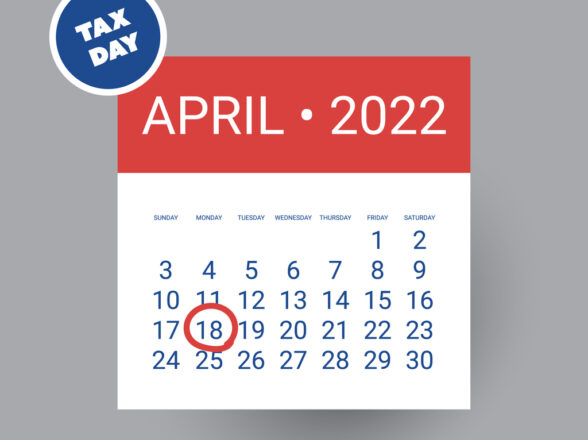Blog
Checklist Before Exercising a Stock Option

Receiving stock options in an employment contract is only the first step of a long and rewarding process. The first stock grant is exciting, but soon, that shine fades into a long period of waiting. Maybe you tick the days off your calendar until the first vesting date. You may choose to set aside savings every month for your investment fund. You may spend that vesting time honing your portfolio so that it is stable and perfectly balanced to take on stocks from your current employer.
No matter how much you anticipate and prepare for the vesting date, actually exercising your stocks also requires a careful process. Not only do you need to understand the process of exercising stock, you also need to prepare yourself, your finances, and your stock portfolio for the purchase. Today, we’re exploring a detailed checklist of preparation for anyone planning to exercise their now-vested stock options.
Take Stock of Your Vested Stocks
The first step is to assess the stocks you have. If this is your first vesting date, then take note of how many stocks will become available on that date along with their value and grant price. If you have waited some time after the first vesting date, take stock of how many stocks have vested since then. Know how many area available to you and what they are worth. Consider your industry, the state of the market, and get an idea of how you want these new company stocks to fit into your financial plan.
Check Your Available Savings
Because stock options are a discount rather than a gift, you will need savings prepared to make the purchase. The amount, of course, will depend on the value of the company stock, the grant price, and the number of stocks you plan to purchase. Many professionals save during the vesting period so that exercising stock options does not otherwise impact their personal finances.
Examine the Current Market Value
Speaking of the value of stocks, take a look at the market. While your grant price determines the cost you’ll be paying, the actual market value determines what you will be purchasing. This defines the distance between the grant and market price, on which you might be taxed, and which also defines the deal you’re getting from your employer.
It’s important to know the true value of your company’s stocks, as well as examining the pattern that indicates how well these stocks will do in the future.
Confirm Good Use of Your Grant Price
Now compare the grant price with the market value and the market trends. Is now the best time to exercise your options and take advantage of the grant price? Ideally, you are aiming for the largest gap in your favor – the biggest savings difference between the grant price and the market value. Most importantly, avoid buying during times when the grant price is too close (or even above) the current market price or the discount is not valuable to you.
ISO or NSO? Prepare for Stock Option Taxes
There are two types of company stocks you can be granted – ISOs and NSOs.
NSO stands for Non-Qualified Stock Option. These are the most common and it’s safe to assume that this is the type of stock option you have been granted unless you know otherwise. For NSOs, you will pay income tax on the difference between the grant price and market price – as if you were paid the discount amount as a bonus.
ISO stands for Incentive Stock Option. These are more prestigious and do not incur taxes. When you exercise ISO, the discount between the grant price and market price is considered a gift from your employer – an incentive.
Be aware of whether exercising your stock options will incur a little extra in income tax this year – and be prepared to file correctly.
Prepare Your Portfolio for Balance
It’s important to never buy stock from just one company – or even just one industry. The reason for this is investment balance and security. Recent events have shown us that even stable industry giants can fall given the wrong circumstances. This is why never to put all your stock eggs into one basket – thus the strategy of a portfolio.
Prepare your stocks portfolio with a variety of other companies. Make sure that your company stocks are not the majority of all your owned stocks and that if any one industry fell, your investments would not be fully lost.
Check the Plan with Your Financial Advisor
Financial advisors specialize in preparing stock portfolios and helping professionals best exercise their stock options. This is a big financial step and one that involves an high degree of strategy. Even financial professionals consult their own financial advisor when making stock market decisions. Your advisor can help you build a strong portfolio, prepare your savings for the purchase, prepare the taxes after the purchase, and ensure that now is a financially beneficial time to make the purchase.
Choose the Number of Stocks to Purchase
If you have a large number of stocks already vested, you have the option of choosing how many to buy. Depending on whether your company’s stocks are costly or still modestly priced, the amount of stocks to buy may be a big decision. The number should be determined both by what you can afford and what will fit well in your balanced portfolio.
Exercise Your Options
With all your preliminary tasks complete, it’s time to exercise your stock options. Go through the proper channels in your company to claim your vested stocks at the grant price. Your employer will have a process to go through, which you may or may not have covered earlier. Make inquiries go through the process of purchasing your vested stocks.
Wait 1 Year Before Selling
Finally, remember to wait at least a year before selling your company stocks. This relates to taxation. Both ISOs and NSOs are subject to capital gains tax if sold before holding onto the stocks for a year. By holding the stocks for a year, you make the stock taxation eligable for income tax, which is taxed at a significantly lower rate.
Exercising your stock options is both a privilege of rising career and an exciting financial time for any professional. We are here to help. If you don’t yet have a personal financial advisor, now is the ideal time to consult. Contact us today to engage financial advise for your stock option plans.

























































































